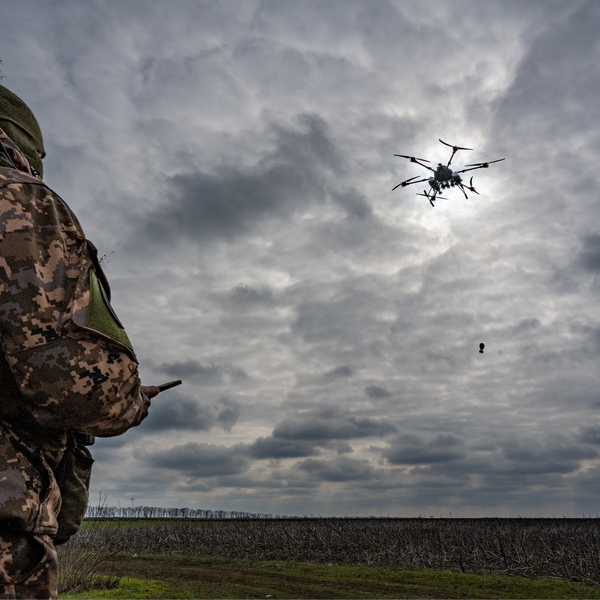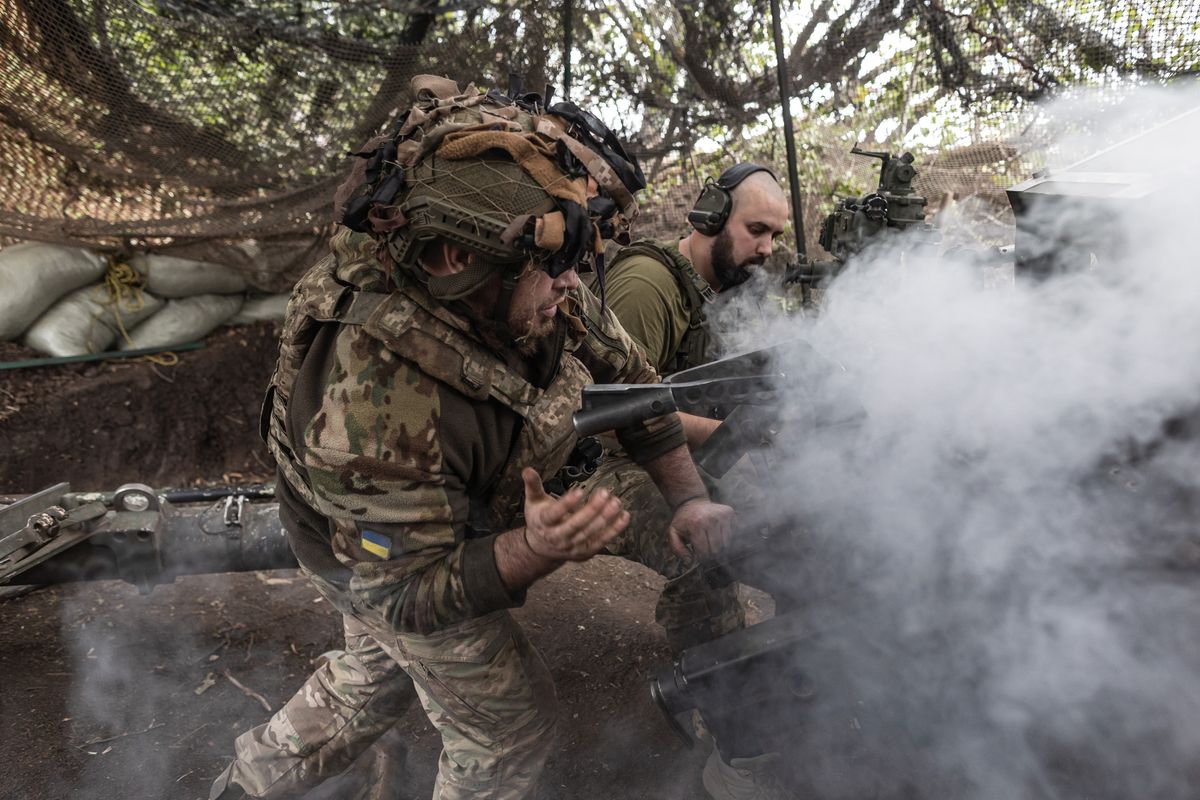OPINION – The United Nations’ decade-long embargo on the sale of arms to Iran expired on Sunday based on a provision in the 2015 Joint Comprehensive Plan of Action (JCPOA) that was aimed at halting Tehran’s nuclear weapons program. So, what happens now?
Tehran says it has no plans to go on a “buying spree,” but China and Russia are the most likely countries to step forward to fill the gap. That’s mainly because Britain and members of the European Union have said they will maintain their own 2007 embargo which has prohibited both the purchase from, and sale to, Iran of conventional weapons.
On Sunday, Secretary of State Mike Pompeo said the U.S. still considers the export ban in place when it comes to Iran purchasing offensive arms, such as tanks, armored combat vehicles, artillery pieces and combat aircraft including unmanned ones.
Pompeo’s statement included a threat that the U.S. “is prepared to use it’s domestic authorities to sanction any individual or entity that materially contributes to the supply, sale, or transfer of conventional arms to or from Iran, as well as those who provide technical training, financial support and services, and other assistance related to these arms.”
The restriction does not apply to sales to Iran of purely defensive weapon systems. Thus the U.S. did not object when Russia, in 2016, delivered S-300 air defense elements to Iran.
The end of the Iran arms embargo is a good time to look at where Iran, Trump’s clear enemy, stands with Beijing and Moscow, Washington’s two main world competitors, near the end of his almost four years in office.
As a private citizen, Trump developed many business ties with China, some of which still exist. From the White House, he started out by trying to develop a personal friendship with President Xi Jinping, but recently, relations with the Chinese leader have noticeably soured. Apparently, to keep his own relationship with Xi, Trump these days regularly blames the “Chinese Communist Party” for all the bad things China is doing. Pompeo and other top officials are following his lead so they, too, almost never mention Xi, although he has seized almost total control of the ruling Communist Party and has set himself up to be president for life.
Meanwhile, China has expanded its relationship with Iran, which has been its top oil supplier in the face of U.S. threats to apply sanctions to those purchasing Tehran’s oil.
President Xi visited Iran in 2016 after the JCPOA was signed and a China-Iran bilateral agreement was signed that called for raising annual trade to $600 billion a year by 2026. That goal probably won’t be reached thanks to the coronavirus, but other connections are growing.
Three months ago, The New York Times disclosed it had obtained what it said was a proposed China-Iran agreement that would see increased Beijing investments in Iran’s banking, telecommunications and ports in return for a regular and discounted supply of Iranian oil over the next 25 years. It also would involve increased military cooperation including joint training and exercises along with intelligence sharing.
Some of that already has taken place. In December 2019, China, Iran and Russia held a four-day naval war game in the northern part of the Indian Ocean and the Sea of Oman. Last month, those three countries also participated in “Caucus 2020,” military defensive exercises in southern Russia that also involved troops from Armenia, Belarus, Myanmar and Pakistan.
Last month, Iran’s Foreign Minister Mohammad Javad Zarif said the cooperative plan had been approved by the Rouhani cabinet and his visit to China this past October 9-10 involved “fruitful talks…on Iran-China Comprehensive Strategic Partnership.”
As the China-Iran agreement moves forward, Beijing is also working to solidify relations with Saudi Arabia and the United Arab Emirates, who, along with the U.S., consider the Tehran regime an enemy.
China’s moves into the region were already underway when Trump entered the White House. When Trump made his first foreign visit to Saudi Arabia in May 2017, it came a month after Saudi King Salman had visited China as part of a month-long Asia-Pacific tour. Meanwhile, King Salman has yet to visit Washington. However, his son, Crown Prince Mohammed bin Salman, the power behind the throne, has twice come to the U.S. and maintains close ties to Jared Kushner, Trump’s son-in-law and top advisor.
However, the Crown Prince visited China in February 2019 and while there, publicly endorsed Chinese repression of the Uighur Muslim minority in Xinjiang Province, an important gesture for the Xi regime.
As diplomatic relations have solidified, military ties between the Chinese and Saudis have been growing.
It is worth recalling that back in 1988, the Saudis secretly paid China for nine road-mobile, CSS-2 launchers and 50 liquid fuelled, medium-range ballistic missile (MRBM), with a reported range of 1,500 miles. Built by the Chinese for nuclear warheads, the Saudis assured the Reagan administration that they would only arm them with conventional warheads. That same year, the Saudis signed the Treaty on the Non-Proliferation of Nuclear Weapons. Those missiles remain operational and are deployed at various Saudi military facilities.
In 2016, after President Xi visited Saudi Arabia, the two countries held two-week, joint anti-terrorism drills using their respective special forces units near Chongquing, a city in southwestern China. Those exercises, which previously had only been conducted with the U.S., have continued. During the Saudi Crown Prince’s 2019 visit, Xi said, “The two sides should promote counterterrorism cooperation in the Middle East.”
In addition, Chinese naval ships visited Saudi’s Jeddah port in November 2019, as part of joint anti-piracy maneuvers with Saudi vessels, a month before the Iran-Russia-China exercises in the region.
In another move, Saudi Arabia’s Air Force purchased and deployed Chinese Wing Loong model unmanned attack drones, and used one in Yemen in April 2018, to kill Houthi rebel leader Saleh Ali al-Sammad. One of the outcomes of King Salman’s 2017 visit to Beijing was an agreement for China to build a factory in Saudi Arabia to build a drone similar to the U.S. MQ-1 Predator.
Trump’s inconsistent and thus confusing actions in the Middle East and South Asia have opened the door to China’s ever-expanding moves in those areas as a growing world power. That is particularly evident because, as in the case of its own need for a steady oil supply, Beijing’s own interests are involved.
In the November-December 2018 issue of Foreign Affairs, Pompeo wrote that “President Trump does not want another long-term U.S. military engagement in the Middle East—or in any other region for that matter.”
Whoever wins the November 3 election will be faced immediately with Russia’s continuing presence in the Middle East and elsewhere, but they will also face a growing Chinese presence as well. The next president will also find countries questioning whether the United States, powerful as it may be militarily, still wants to play its past role as leader of the free world.
Read more expert-driven national security insight, perspective and analysis in The Cipher Brief











